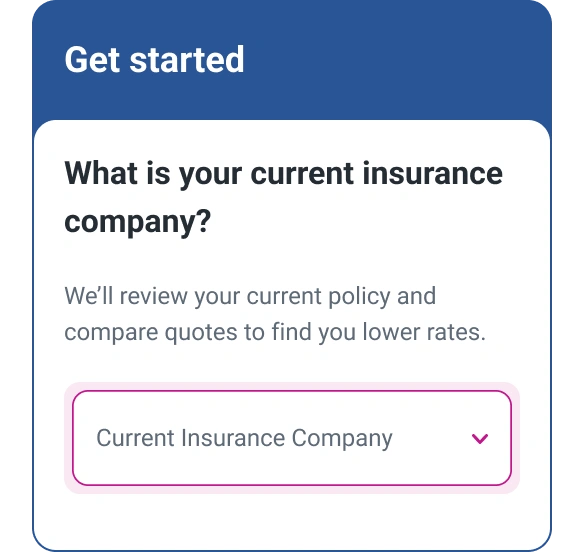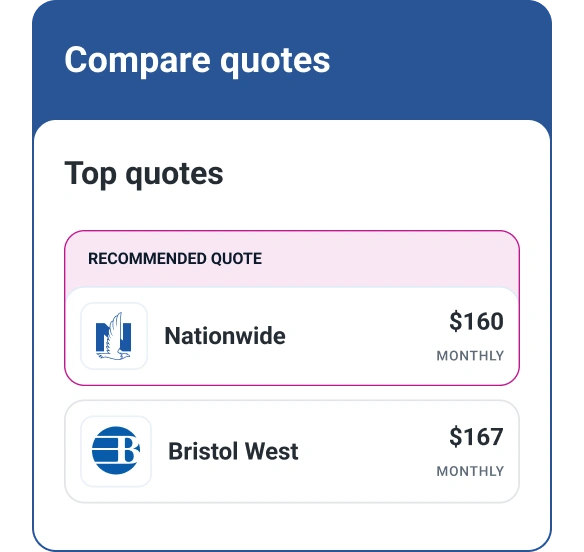The 10 Cheapest States for Car Insurance

For those who lease or own a vehicle, auto insurance premiums can be a big expense. How much you'll pay for a premium, on average, varies widely by state. Drivers in the five states with the highest average annual auto premiums pay about double that of what's paid on average in the five states where auto insurance is the cheapest.
Gabi®, a part of Experian, is an online insurance marketplace that offers real-time auto insurance quotes, uses actual insurance policies sold to calculate the average premium their customers paid in each state annually. Nationwide, the average annual premium for policies sold through Gabi was $1,951 as of mid-2021.
The reasons for varying auto premium rates are numerous. Driving history is an obvious factor, and state laws vary on how much coverage is required. But according to the National Association of Insurance Commissioners (NAIC), there are at least three factors that are correlated with where you live and drive. Those are:
- Percentage of total miles driven on highways: 86% of all traffic is on interstates and highways, according to National Highway Administration data. A higher percentage of miles driven there means less time on more accident-prone local roads.
- Average disposable income: Nationwide, the average personal income was $62,866 as of the third quarter (Q3) of 2021, according to the Bureau of Economic Analysis. (Disposable income is what's left after taxes.) Higher average disposable incomes may mean there are more vehicles in total or more expensive vehicles to insure.
- Urban population: States with a higher percentage of city dwellers tend to have higher traffic densities—which means more cars on the road at any given time—than more rural states. Higher traffic density means more potential for accidents
For this analysis, we looked at Q3 2021 personal income data from the Bureau of Economic Analysis and the most recent U.S. Census Bureau population density data from 2020. Auto insurance premiums were provided by Gabi and are based on the average over the three years preceding September 2021. Average FICO® ScoresΘ are based on Experian data as of September 2021.
What States With Cheaper Auto Insurance Have in Common
We compared the rates users paid on average for auto insurance premiums in states with the three variables above. Here's what we found.
Midwestern states are well-represented. The lakes are indeed great when it comes to less expensive auto premiums. Illinois, Indiana, Minnesota, Ohio and Wisconsin are all among the 10 states with the least expensive auto insurance premiums.
There's less density, in terms of both traffic and people. Of the 10 least expensive states for auto premiums, only one, Ohio, is among the 10 most dense states. Contrast this with six of the 10 most expensive states for auto premiums, which are high-density states.
The 10 Cheapest States for Car Insurance
1. Maine
- Average annual auto insurance premium: $1,199
- Average FICO® Score: 727
- Average personal income: $56,306
- Population per square mile rank: 39
2. Idaho
- Average annual auto insurance premium: $1,213
- Average FICO® Score: 725
- Average personal income: $50,703
- Population per square mile, rank: 45
3. Vermont
- Average annual auto insurance premium: $1,242
- Average FICO® Score: 736
- Average personal income: $60,380
- Population per square mile rank: 32
4. New Hampshire
- Average annual auto insurance premium: $1,309
- Average FICO® Score: 734
- Average personal income: $70,908
- Population per square mile rank: 22
5. Iowa
- Average annual auto insurance premium: $1,397
- Average FICO® Score: 729
- Average personal income: $56,999
- Population per square mile rank: 37
6. Ohio
- Average annual auto insurance premium: $1,400
- Average FICO® Score: 715
- Average personal income: $55,836
- Population per square mile rank: 11
7. Wisconsin
- Average annual auto insurance premium: $1,415
- Average FICO® Score: 735
- Average personal income: $57,979
- Population per square mile rank: 26
8. Indiana
- Average annual auto insurance premium: $1,428
- Average FICO® Score: 729
- Average personal income: $55,396
- Population per square mile rank: 17
9. Illinois
- Average annual auto insurance premium: $1,512
- Average FICO® Score: 719
- Average personal income: $67,922
- Population per square mile rank: 13
10. Minnesota
- Average annual auto insurance premium: $1,514
- Average FICO® Score: 742
- Average personal income: $65,801
- Population per square mile rank: 31
Other Factors to Consider
Geography is a factor, not only at the state level, but also at the levels as granular as ZIP code. Your ZIP code may matter as much, if not more, than your state when purchasing auto coverage. Crime rates for theft and vandalism vary much more by ZIP code than they do by state, for example. Consequently, so may your auto premiums.
However, an individual's driving experience, number of accidents, amount of coverage purchased as well as type and age of the insured vehicle are at least as important when determining the premium you'll pay.
In many states, insurers can use credit-based insurance scores to help determine rates they'll offer drivers. Just as lenders use credit scores to assess the possibility of a borrower defaulting, insurers use credit-based insurance scores to assess the possibility of loss to the insurer. Both types of scores are often influenced by similar credit report information.
Don’t overpay for auto insurance
If you’re looking for ways to cut back on monthly costs, it could be a good idea to see if you can save on your auto insurance.
Find savingsAbout the author
Chris Horymski leads Experian Consumer Service’s data research for Ask Experian, where he publishes insights and analysis on consumer debt and credit. Chris is a veteran data and personal finance journalist and previously wrote the Money Lab column for Consumer Reports and headed research at SmartMoney Magazine.
Read more from Chris

